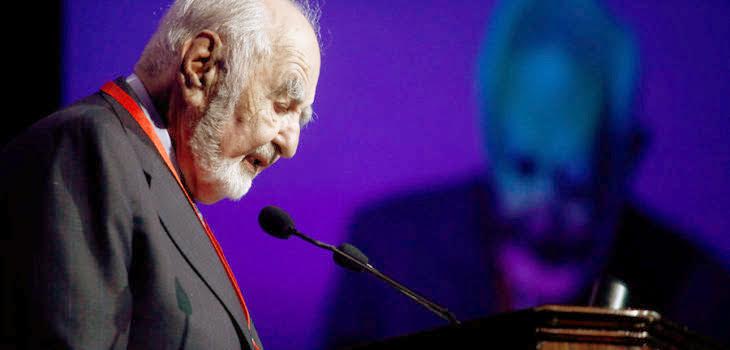
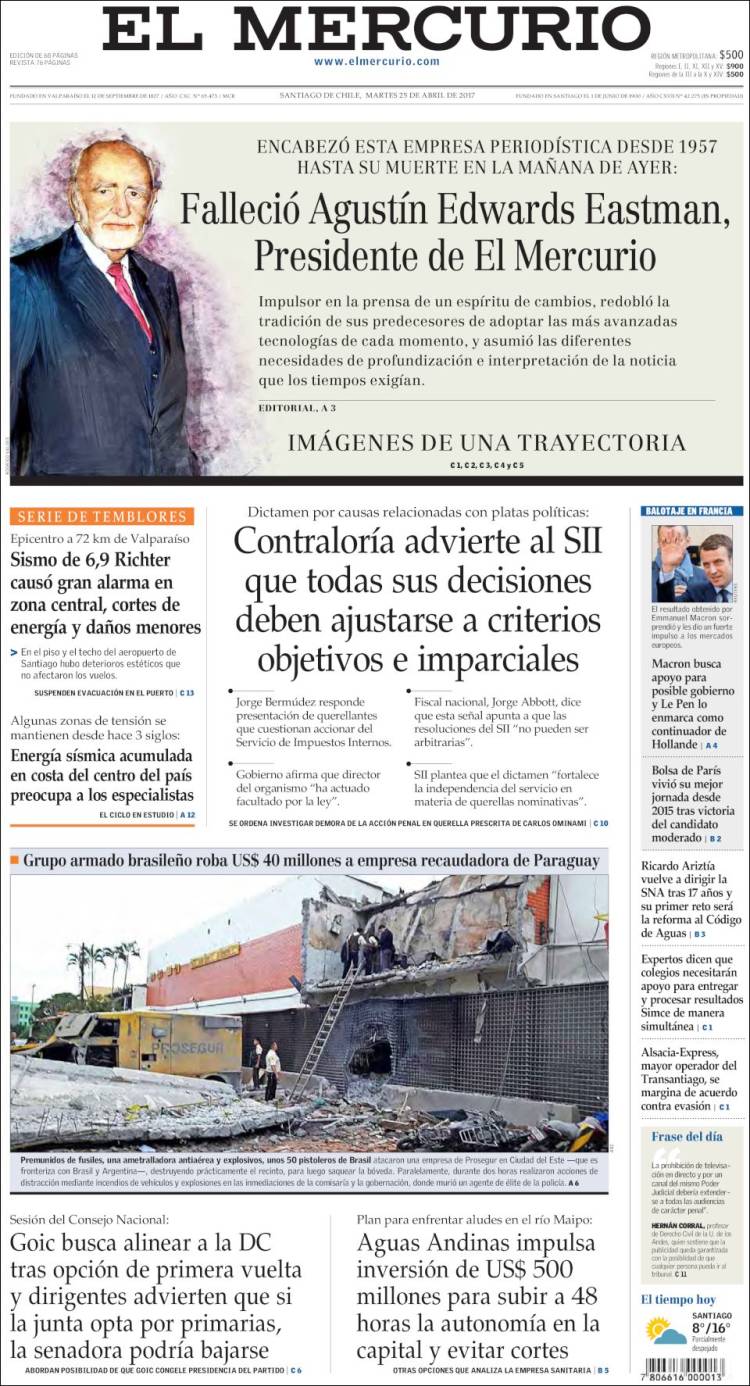
Front page of today’s El Mercurio, of Chile.
Updated Tuesday, April 25, in New York City, at 07:35
The last time I saw Agustin Edwards was about one year ago, in the lobby of the majestic Amstel Hotel in Amsterdam. It was the appropriate setting to run into Mr. Edwards, the patriarch of a media empire in his homeland, Chile, and publisher/editor of El Mercurio until his death April 24.
At this encounter, Mr. Edwards, perfectly attired in a brown suit, red tie and shiny shoes, and accompanied by his always friendly wife, Malú del Río, were returning from the opening of a major art exhibit in that Dutch city where art is as prevalent as canals and delicious waffles.
I was not surprised to find Agustin here, although, after we shook hands and exchanged a few salutations, I kept thinking: How old is this man? How admirable that he is still traveling, sponsoring and enjoying the arts and as sharp with his commentaries as ever. He immediately turned to me with the customary intensity and asked me: “What newspaper project brings you here? Then the question that never failed every time we met anywhere in the globe: Have you seen El Mercurio lately?”
I now know that Mr. Edwards was 89 when he died peacefully at his home in Santiago de Chile, a place I know well as he and Malu were my courteous and hospitable hosts the many times I came to Santiago to work on a redesign of El Mercurio.
The people and the redesigns
Long after we have forgotten what font we used on a certain project, or what the specific grid was, we forever remember some of the people involved. And, among the gallery of people that I have met after more than 700 redesign projects in 120 countries, there are a handful that stand out as people who truly enter the category of unforgettable.
Agustin Edwards Sr. is one of them.
The man at the head of the table
Nobody who was there can ever forget Mr. Edwards entering a room. He did so in a regal manner so that you could have been in the presence of a king, a president or a monarch. In his world, he was all of this—and more. When he sat at his chair at the end of one of those long tables that sit 20 or 40, everyone stopped talking and turned to him. He was powerful and he knew it. He loved El Mercurio, the media empire he inherited from his family, and he would not let anyone do anything to El Mercurio that he would consider detrimental–which could be something as simple as changing the font for photo captions.
He was also a philanthropist, a yachtsman and a lover of books and gardens.
He was never too far from controversy.
Like others described as a media baron, Mr. Edwards was the subject of stories in the media and was known for his right-wing views. His Wikipedia bio also links him to the politics of Chile where he allegedly supported the 1973 coup d’état to oust socialist President Salvador Allende. According to the U.S. Senate‘s Church Committee, he was one of the main Chilean participants in the Central Intelligence Agency‘s Operation Mockingbird campaign to influence the media in Latin American countries.
For an actor to play Mr. Edwards, he would have to assume various moods: courteous, opinionated, sometimes stubborn, often direct (which in the world of design turns into: I don’t like this, go show something else soon!). I found out during the El Mercurio project that it was not easy to please Mr. Edwards. He would dissect the most minute of details (a byline, for example) and nothing escaped his scrutiny. He was also interested in upgrading the design of the legendary El Mercurio, but not too much. He quickly applied the brakes often when we suggested elements of design that took the newspaper too far from its visual roots. In the end, Mr. Edwards won, as he often did. Most of what we suggested for El Mercurio ended up on the cutting floor of that huge and rich library of El Mercurio, where our meetings were held—and El Mercurio, to this day, remains close to its roots, as protected by its patriarch. Here is a recent front page.
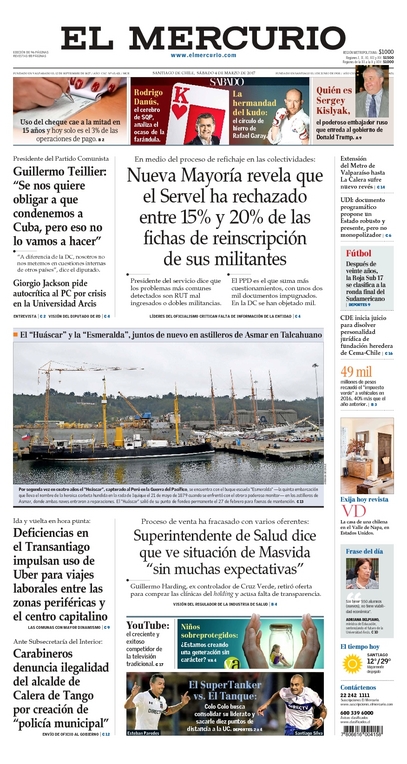
Our Design Proposals to Mr. Edwards for El Mercurio
Here is a photo taken during the cocktail gala party to introduce the new look of El Mercurio. I am here with Mr. Edwards and and Juan Pablo Illanes, then editor-in-chief of the newspaper.

Our Garcia Media Latinamerica team, with senior designers Rodrigo Fino and Paula Ripoll, assisted by Chilean designer Javier Devilat, came up with a series of prototypes, from the classic to the more “contemporary”. At the end, none of it would be applied. Let’s take a look at front page prototypes here, starting with the classic look, the one we thought did not deviate too far from El Mercurio’s existing design at the time:
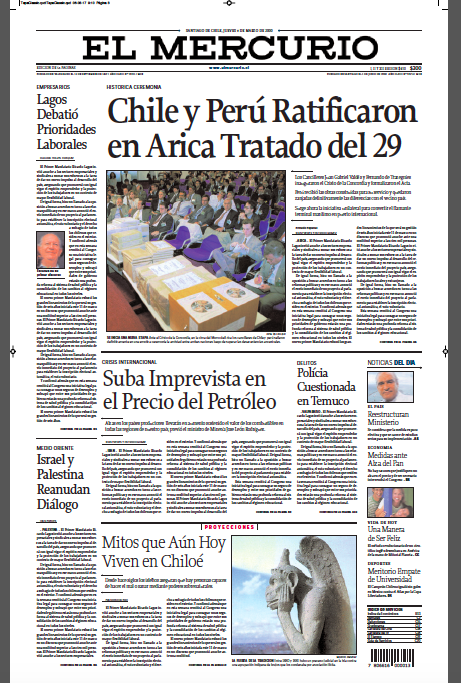
Then there was the “middle of the road” approach, a bit more open, with a different system of navigation to stories inside:
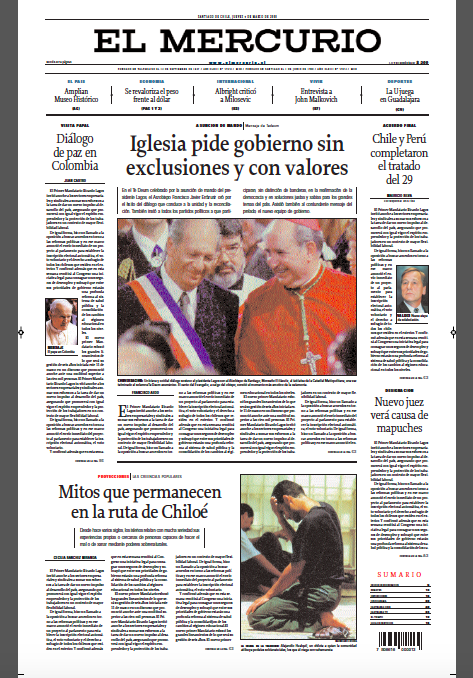
And, as we do with all our projects, we also showed what we called a more “extravagant” version of what El Mercurio could be like, one that was quickly dismissed as going too far:
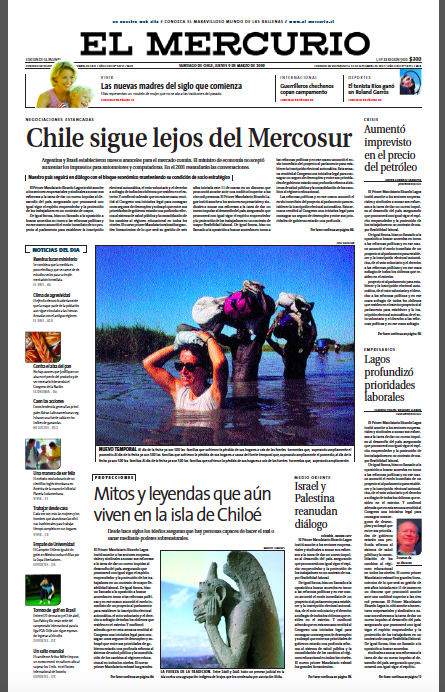
Here is a comparison of one of our proposals and how El Mercurio incorporated very few changes proposed, and today it is still pretty much what it was like before our redesign.
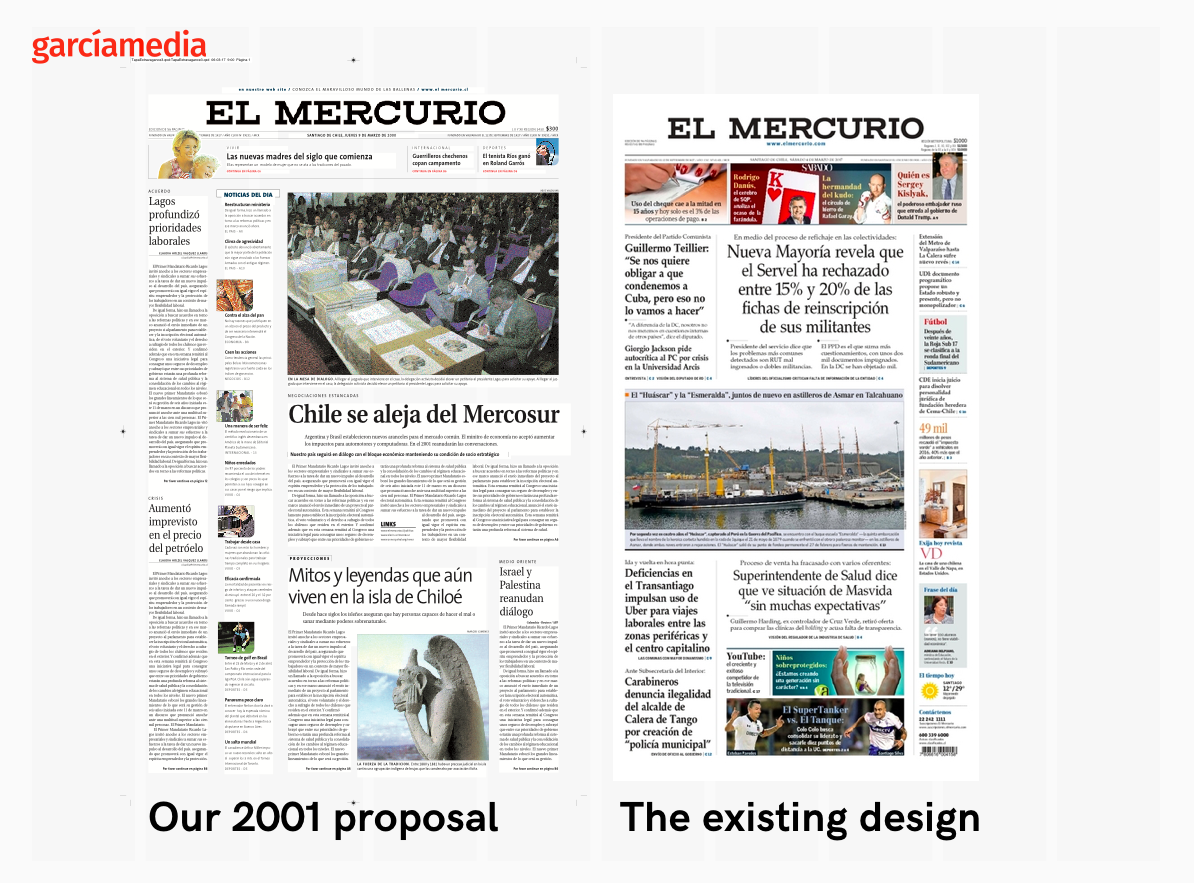
I still remember the expression on Mr. Edwards’ face as he looked at these proposals. All eyes in the presentation room were on the man who would ultimately decide that the disruption during the redesign process would be minimal. One must add, however, that Mr. Edwards, while not always the most pleasant man to transact business with, was, nevertheless, always interesting, articulate, well informed and engaging.
Walking in the garden with Mr. Edwards
I also got to know the other side of Mr. Edwards, the one who surrounded himself with photos of his children and grandchildren, to all of whom I extend my condolences today. I got to know the Edwards family and appreciated the warmth and hospitality that they always offered me.
My favorite times with Mr. Edwards were when he invited me to walk around those luscious gardens around his homes (yes, there was an hacienda at the foot of the majestic Andes, and I tell you about that later), or in the vicinity of El Mercurio’s picturesque building, with greenery, and even a church, inside the compound. Agustin Edwards’ passion for landscaping and gardens, has been brought to life not only in the two private islands he owned (one in the south of Chile and another in Maine), but also through his collaboration with famed landscape architect, Russell Page.
During those walks through his gardens, Mr. Edwards could be meditative, unusually serene and often ready to display his journalistic intellect and his passion for our craft. For reasons that escaped me, it was during these moments that he always referred to be as “Gallo” (which means “rooster” in Spanish). I understand that it is an affectionate way to refer to someone in Chile.
“Gallo,” he would ask me, fixing an intense look on me, “do you think that all this Internet is going to truly take print off the throne?”. The exchanges normally took place in English, a language he spoke fluently, as he was a Princeton University graduate (1949).
Or, as we made a turn around the bush of white gardenias that always smelled so good, he would inquire if I would like to drop everything and just come and work for him and El Mercurio. It was always a tempting offer and I was flattered.
Then came 9/11: pheasants, fables and campfires
One of the many reasons that Mr. Edwards will always be an unforgettable character to me is that I will forever associate him with that fateful date 9/11.
I happened to be in Santiago de Chile, and ready for the launch of the new design of El Mercurio precisely when the attack of the Twin Towers in Manhattan took place. We all remember where we were that day.
Ironically, Mr. Edwards had been prompting me and our redesign team to create “fictitious front pages” for El Mercurio just in case that a major event occurred on 9/12 the morning of the first day of the new design. We went back and forth with such suppositions as: what happens if Augusto Pinochet, military ruler of Chile, dies on the day of the launch? And what happens if Pope John Paul II, who was very ill at the time, passes away that day? Then, what happens if both of these men die on the same day. (I remember a member of the editorial team mumbling the headline: Devil & Saint).
Little did Mr. Edwards, or anyone for that matter, know what would be reported on the front page of El Mercurio on the first day with its new look, as we see below. Because of 9/11, and my mandatory stay with Mr. Edwards, my book Pure Design was born.
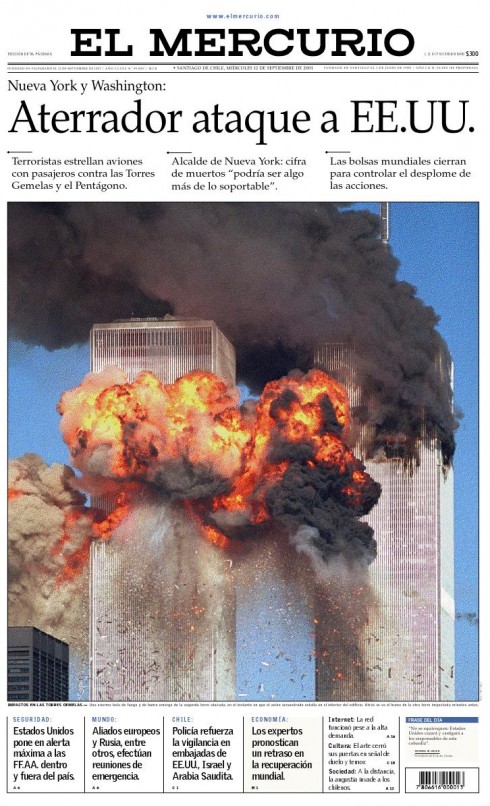
Pure Design and Mr. Edwards

I cannot separate the horrific events of September 11, 2001 from the writing of Pure Design. The two are linked in my mind because there would probably be no Pure Design if I had not stayed put in Santiago de Chile at the home of Mr. Edwards, when all flights were cancelled for a few days and nobody could go anywhere.
Mr. Edwards thought it would be a great idea if he and I escaped from the bad news environment of the moment and, instead, retired ourselves to his hacienda, Graneros, about 49 miles south of Santiago. We took a helicopter ride and suddenly, I could almost touch the majestic Andes. This somewhat surreal time for all became more so for me inhabiting this huge place, with an army of servants ready to pick up your dirty sock off the floor the moment you dropped it there. It was only Mr. Edwards and me, the servants and the menagerie of exotic animals, including llamas and a collection of exotic pheasants, with names like Lady Esmeralda (she was definitely my favorite), or Lady Chablis, each assigned to an individual cage, the name over the door of the cage, sort of like the dressing room of a movie star. There was even a man who introduced himself to me saying, “I am Manual, the pheasant keeper”. Doesn’t everyone have a pheasant keeper, I wondered? Sounds better in Spanish: “Soy Manuel, el faisanero.”
It was chilly in the Andes, and the first day I went running I realized I was not properly dressed. That day, at breakfast, I related to Mr. Edwards that I had felt cold during my run at the foot of the mountains, always inside the hacienda compound. Mr. Edwards did not say much, but the next early morning, when I stepped out, he had ordered for two or three of the servants to start campfires all around the perimeter of my run, to keep me warm. Nice touch. I spent that day’s entire run doing circles around the orange/red fires thinking that nothing was beyond the reach of Mr. Edwards. If he wanted it, it would get done.
This was a world the likes of which I had never experienced. All of it against the backdrop of the Andes, a wall separating this place from the entire world, hugged and kissed by the whitest of clouds. In retrospect, this was ideal setting to escape the madness that the events of 9/11 brought to the world, from which we have never fully recovered.
I tried to make the best of the situation and the isolation, worried about my family back in the US. My host was magnificent in the hospitality he presented me with, including daily trips to his personal library, complete with a collection of incunabula, among the finest in the world. It was there that I saw an original edition of Aesop’s Fables, the little book that Mr. Edwards held in his hands with much care. When he started flipping through its pages, I was mesmerized by the illustrations, the handwritten letters, but, also, by how the master of the fables could tell a complete story in a mere few lines, sometimes 11, never more than 21.
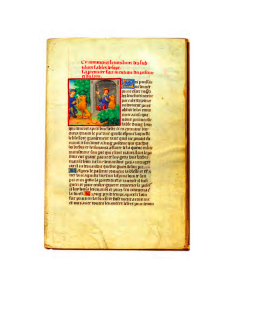
The more I saw that book (which I revisited everyday), the more I came to the conclusion that I wanted to write a book with the briefness of the fables, and the visual simplicity that accompanied each of them.
I would not write chapters.
I would not have more than one illustration per topic.
I would try for a minimalist approach to both the writing and the visuals.
Pure Design appeared in 2002. Sometimes I think that Pure Design was ahead of its time. In the era of Twitter-—with messages shorter than many of Aesop’s fables—-one could possible conceive a Pure Design version full of smart Tweets about our craft. Here are a couple of sample “chapters”. Yes, that was all the text that was written for that specific topic.
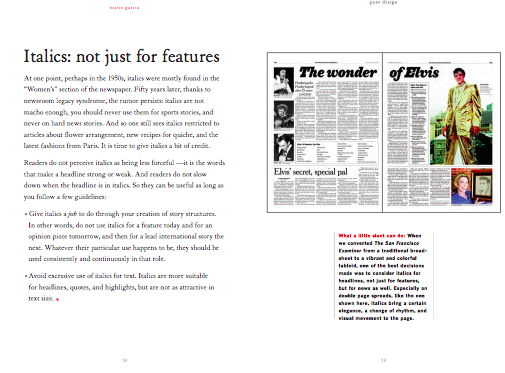
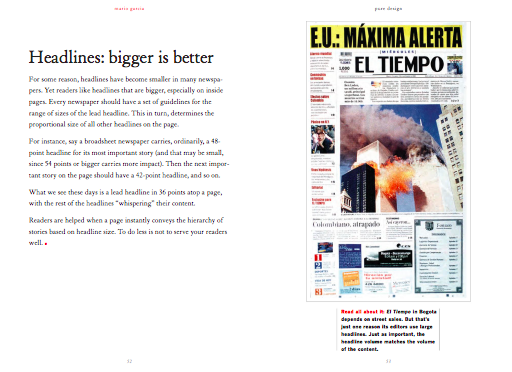
Unforgettable, indeed.
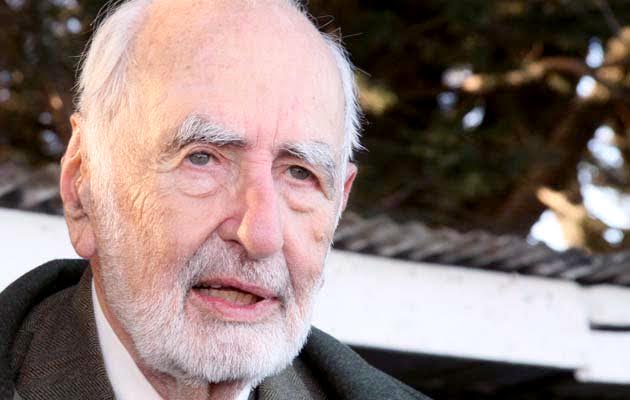
So, Mr. Edwards, as you start your new journey, into new and perhaps more luscious gardens, I am glad I met you.
I shall always remember you as one of the most interesting personages I ever met. Nobody has ever called me Gallo but you.
I am happy to hear from my Chilean friends that it is always used in an affectionate manner.
Thinking about it, I, too, developed an affection for this complicated man. May he rest in peace.
Read all about El Mercurio’s redesign in my blog:
https://garciamedia.com/blog/remembering_9-11_learning_the_real_meaning_of_change/
If you wish to download Pure Design, go here:
http://issuu.com/mariogarcia/docs/mario_garcia_pure_design.
Speaking Engagements Coming Up
The press announces the death of Agustin Edwards
While his own newspaper and media empire, El Mercurio, did not immediately report the news of Mr. Edwards’ death, various media outlets in Chile and also El Pais, of Madrid, were quick to report the news. El Pais’ headline read: Death of Agustin Edwards, the emperor of the Chilean press
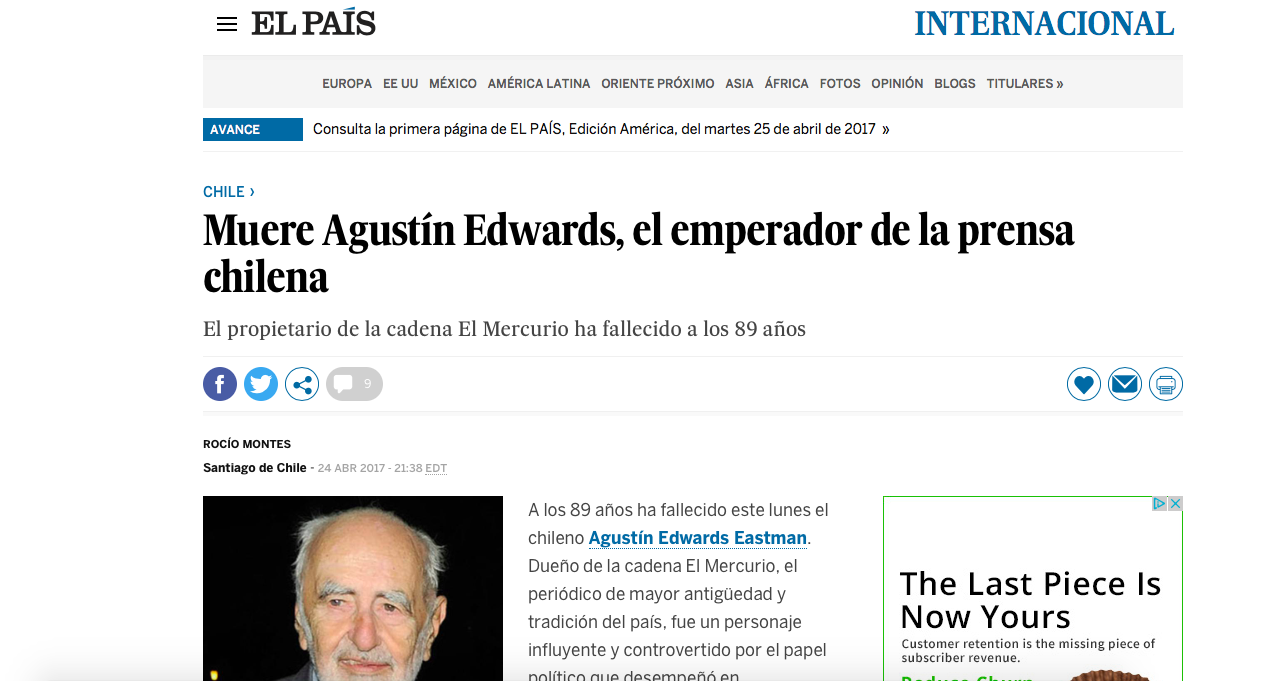
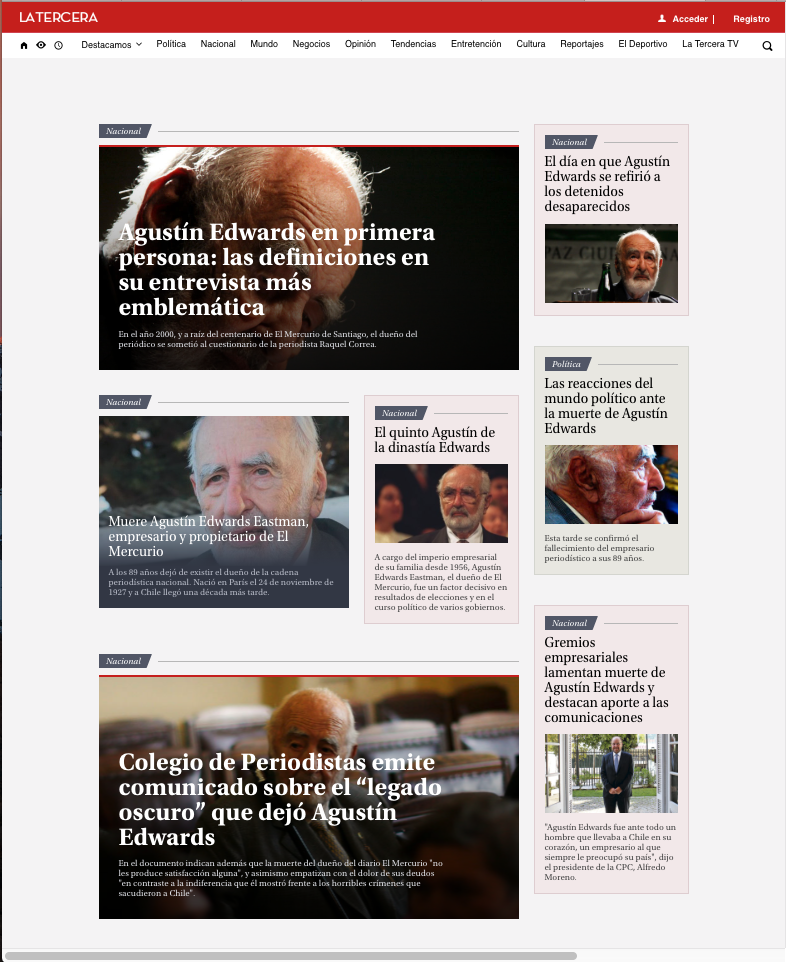
El Mercurio covers the death of its president
It was early Tuesday morning (today) that El Mercurio carried an item on its home page devoted to the death of Mr. Agustin Edwards, its owner/publisher.
Read it here (in Spanish):
An editorial in El Mercurio included the following:
“As happens with personalities of his standing, he has been and probably will continue to be the object of controversy.”
Speaking Engagements Coming Up

SIPConnect 2017, to be held in Miami June 21-23, is a program of the Inter American Press Association, IAPA, or SIP (Sociedad Interamericana de Prensa). The venue will be the Hilton Miami Downtown Hotel.
Details:
Join us at the SIPConnect Hemispheric Conference 2017. Organized by the IAPA, SIPConnect is a gathering of media and digital businesses to encourage more audiences and higher revenues. It’s a laboratory for new ideas and successful experiences for the digital transformation. As in the 2016 successful meeting that was attended by media from the US, Latin America and the Caribbean, experts in digital businesses and representatives of innovative companies will participate in this event.
For more information: http://www.sipiapa.org/notas/1211078-llamado-sipconnect-2017